Scott Ransom
Wheel Sizes: 29”; 27.5” rear compatible
Suspension Travel:
- Frame: 170 mm
- Fork: 170 mm
Geometry Highlights:
- Sizes offered: S, M, L, XL
- Headtube angle: 63.8°, 64.4°, 65° (headset cup positions / swap)
- Reach: 483 mm (Large)
- Chainstay length: 440 mm (all sizes)
Frame Material: Carbon fiber front triangle / aluminum rear triangle (carbon rear triangle on 900 model)
Price: Complete bikes $5,000 to $9,999
Blister’s Measured Weight: 37.52 lb / 17.02 kg (Ransom 920, Large, with included tools and spare tube, no pedals)
Test Locations: Washington & Montana
Reviewer: 5’9’’, 165 lbs / 176 cm, 74.8 kg
Test Duration: 1.5 months
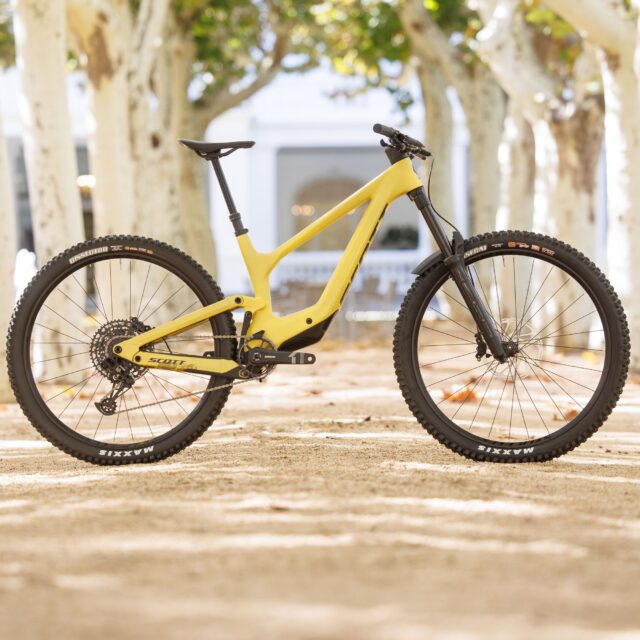
Intro
When you buy a Scott, you’re not just buying a bike, you’re buying a conversation. That conversation will go something like this:
Random guy on trail: How do you like that ebike?
Me: It’s not an ebike, the shock is just hidden inside the downtube.
Random guy: But isn’t that a motor?
Me: No, it’s just the shock in there. [pops off hatch to show the shock]
Random guy: Huh. It looks like an ebike.
There’s an interesting duality to the Ransom. On one hand, it’s a unique frame with a lot of unique features — most notably, a hidden shock that makes the Ransom look like an eMTB. On the other hand, the geometry and ride qualities of the bike are pretty normal (in a good way). The parts that are hung on the bike split the difference; some are unique, and some are standard fare. I suspect the end result of all that is a bike that’s going to strongly appeal to some and strongly repulse others.
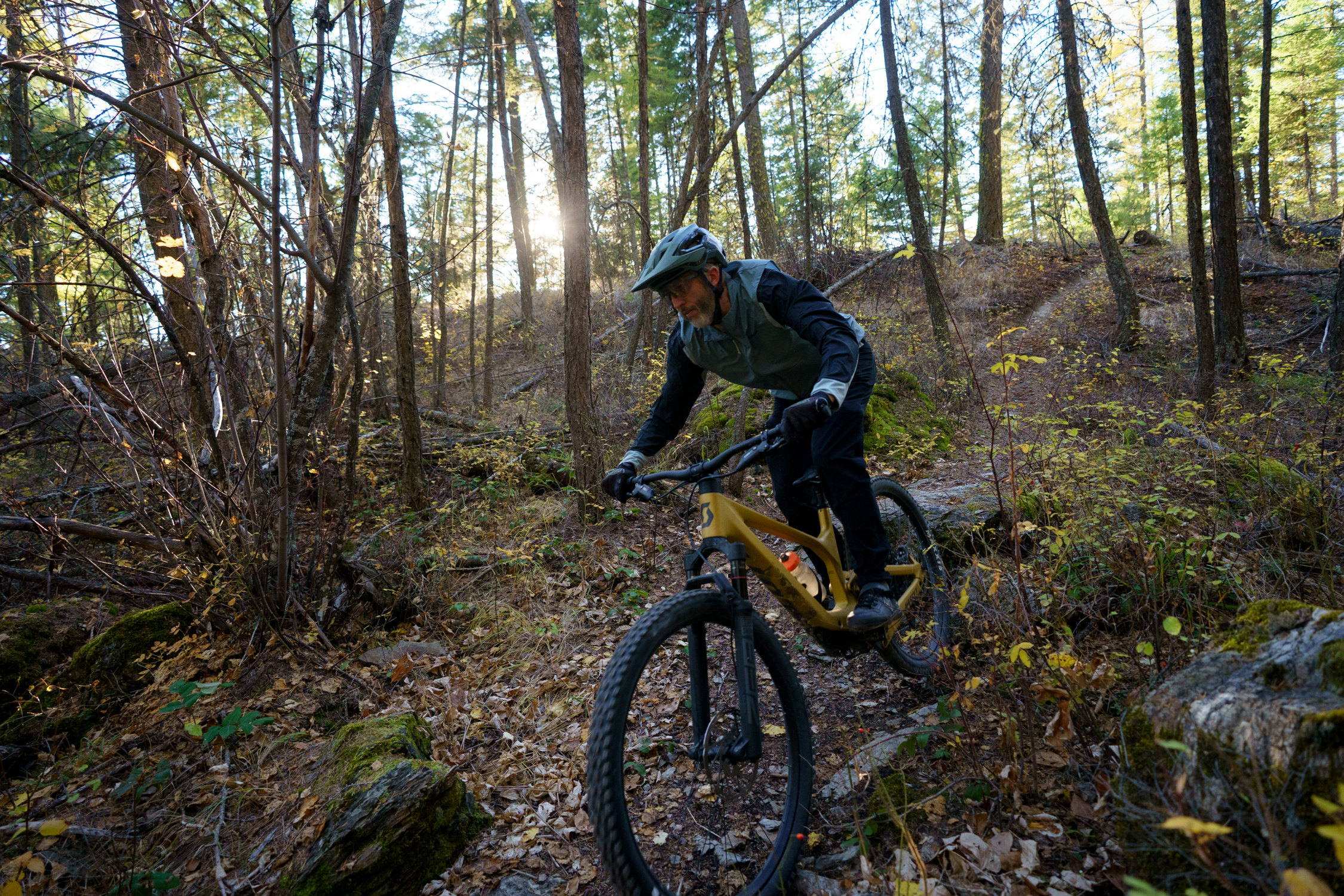
The Frame
The Ransom has been in Scott’s lineup for a while now, but the current iteration is a significant departure from prior versions. As with all of Scott’s current crop of full suspension bikes, the Ransom gets the hidey-hole treatment, and the rear shock is tucked inside the downtube, which dramatically affects both the look of the bike and how the frame is designed.

The linkage system on the shock is a 6-bar design, which includes a short link that rotates concentric to the bottom bracket that drives the shock. That link is coupled to the chainstays and, via another link, to a rocker arm that connects to the seatstays.
That linkage results in kinematics that are well-suited to the Ransom’s Enduro intentions without straying too far from the norm. The leverage ratio is nicely progressive at around 25%, which should allow for both air shocks and coils to work nicely with the frame, although the bike is only offered in stock form with air shocks. Anti-squat sits a bit over 100% at sag in the climbing gears, which is par for the course on a bike like this. And anti-rise is at the low end of normal — around 60%, meaning the rear suspension will stay more active while braking, but the bike will be more inclined to rock forward than a bike with higher anti-squat values.

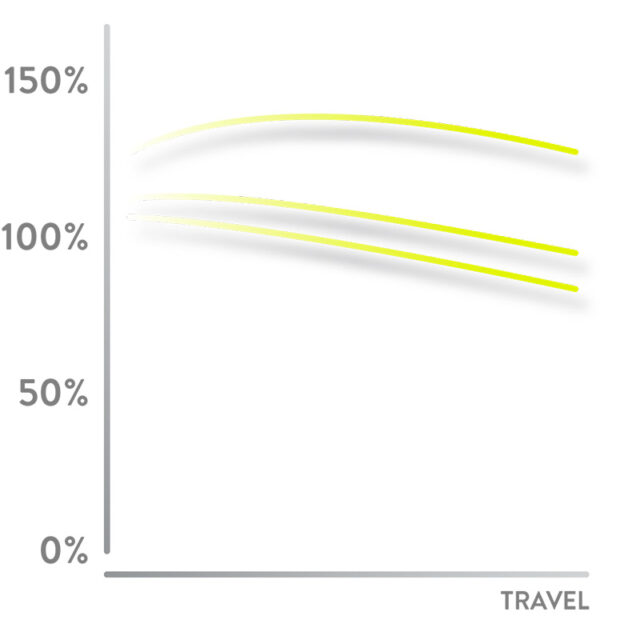
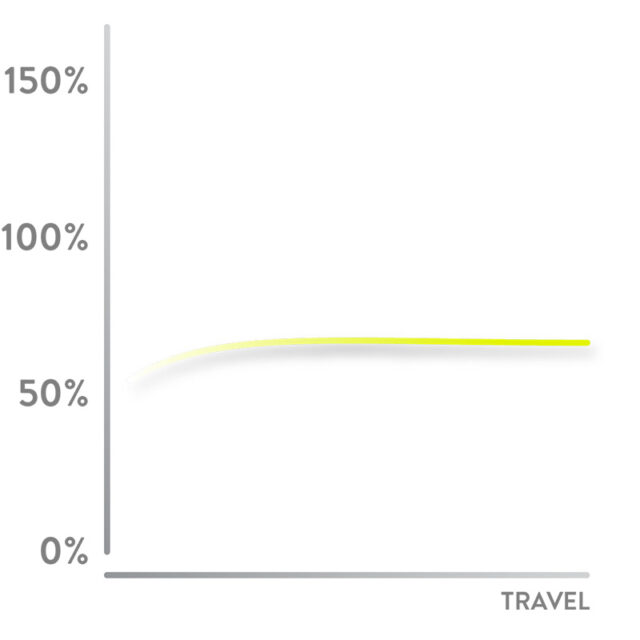
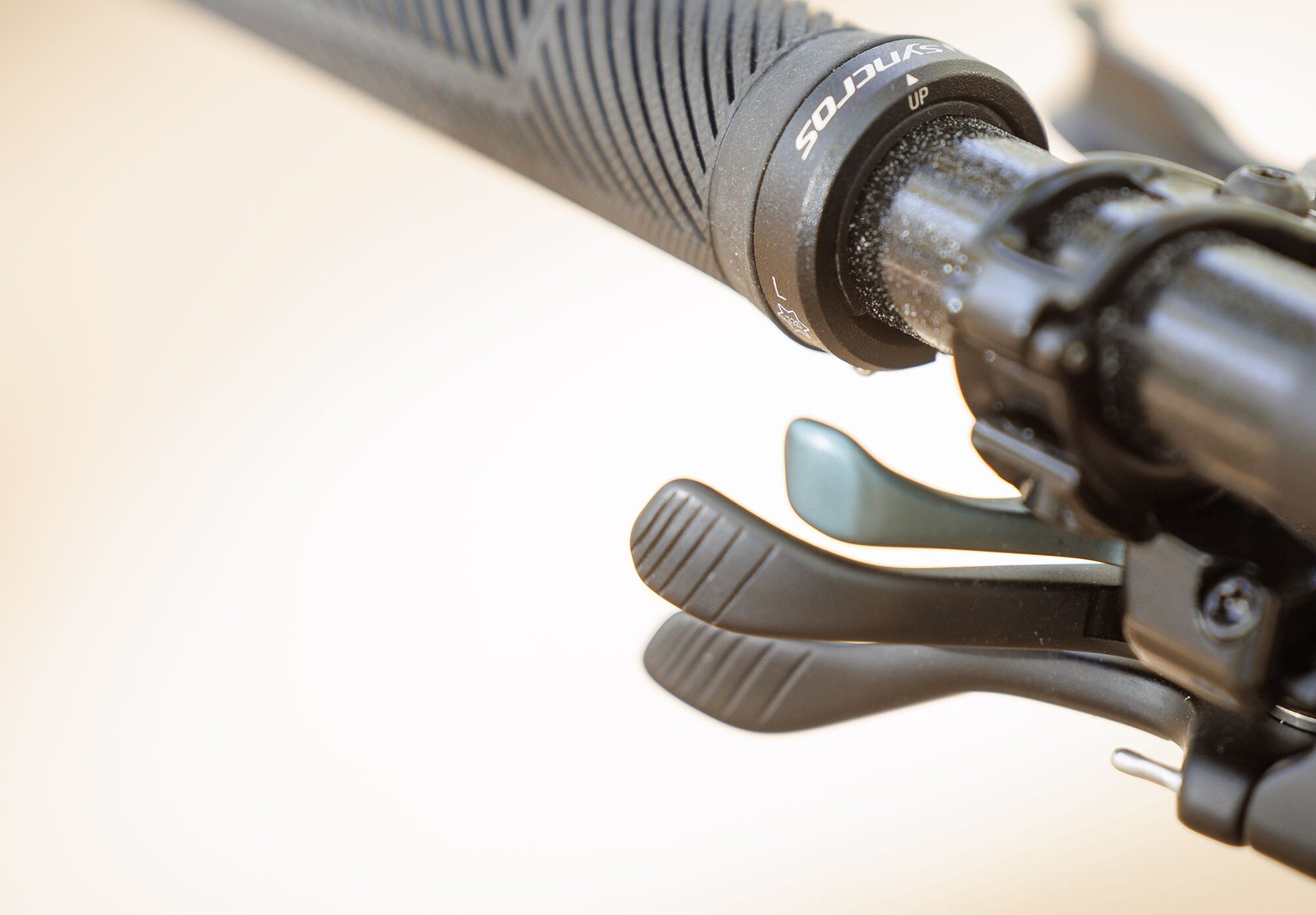
None of the handlebar-mounted suspension controls affect the fork. It’s also noteworthy that the middle “ramp control” mode doesn’t substantially affect the shock’s damping — it basically just shortens the bike’s travel by making the air spring much more progressive, so that you can’t realistically access the deeper portion of the stroke.
The rear shock is accessed via a plastic panel just in front of the bottom bracket, which is removable with the push of a button. The air valve and damping knobs are easily accessible once the panel is open, although, at the risk of stating the obvious, damping adjustments would be challenging to make while riding.
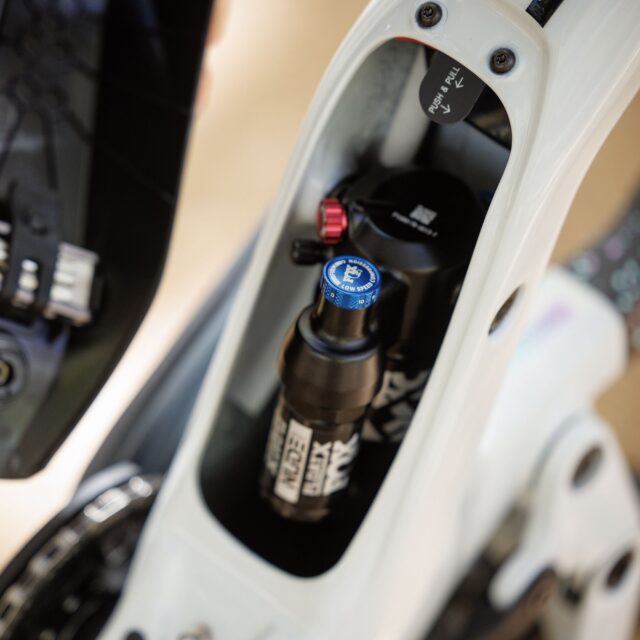
The Ransom doesn’t have any flip chips for adjusting the suspension, but it does have one for switching to a 27.5’’ rear wheel (all builds and sizes come with dual 29’’ ones). It also features a two-position headset cup, allowing the head angle to be adjusted between 63.8 ° and 65 °. There’s also a second neutral headset cup that comes with the bike for a 64.4ᣞ head angle. Speaking of the headset, the cables go through it. Complaints about this system will be covered below.
The Ransom comes with an assortment of integrated tools, both externally and internally. Externally, the bike comes with a water bottle cage that has an integrated multi-tool and a chain breaker. The panel that allows for access to the shock also accesses a storage compartment in the downtube, which comes stocked with a nicely integrated sleeve holding a spare tube, another multi tool (with different tools than the external one) and, somewhat curiously, another chain breaker. It’s worth noting, however, that the downtube storage is not particularly cavernous — there’s not much room in there for anything beyond the included tube and tools.
The frame has a smattering of other features that are worthy of mention: a UDH hanger, an integrated (but removable) lever on the rear axle, and frame protection in the usual spots as well as a mud guard that keeps the bottom bracket pivot area a little cleaner.
All Ransom models have a max system weight of 128kg (282 lbs). That limit is for the rider + gear + the bike itself.
Fit and Geometry
The Ransom’s geometry doesn’t stray too far from modern norms. There are only four sizes offered in the Ransom, so jumps between sizes are a bit bigger than they might be if more sizes were offered.
The headtube angle is adjustable between 63.8ᣞ, 64.4ᣞ, and 65ᣞ by flipping / switching cups. Seat tube angles are between 77ᣞ and 78ᣞ on all sizes, which is pretty normal for a bike like this. Chainstay length is 440mm in all sizes, which is pretty typical for a modern Enduro bike on the smaller sizes, and maybe a little short at the bigger end.
The bottom bracket drop is 25mm, which yields a bottom bracket height of around 350mm. This is at the high end by modern standards, with many bikes in this class sitting 5-10mm lower. This also impacts the stack height of the bike; the high-ish bottom bracket combined with a short-ish headtube yields stack heights that aren’t particularly tall.
Reach and toptube numbers are fairly normal; the Medium has a 458mm reach and a 599mm horizontal top tube. The Large bumps up to a 483mm reach and a 624mm top tube. That’s in line with most of the industry, and means most people will probably stick with whatever size has worked for them previously.
The Builds
Scott offers the Ransom in three builds as well as a frame-only option. The mid-range Ransom 910 is also offered in a women-specific “Contessa” version, though it only differs from the standard Ransom 910 in its paint and the saddle spec.
Aside from the usual upgrades in the parts, the top-of-the-line Ransom 900 version also receives a full carbon fiber frame, whereas the other three builds have an aluminum rear triangle.
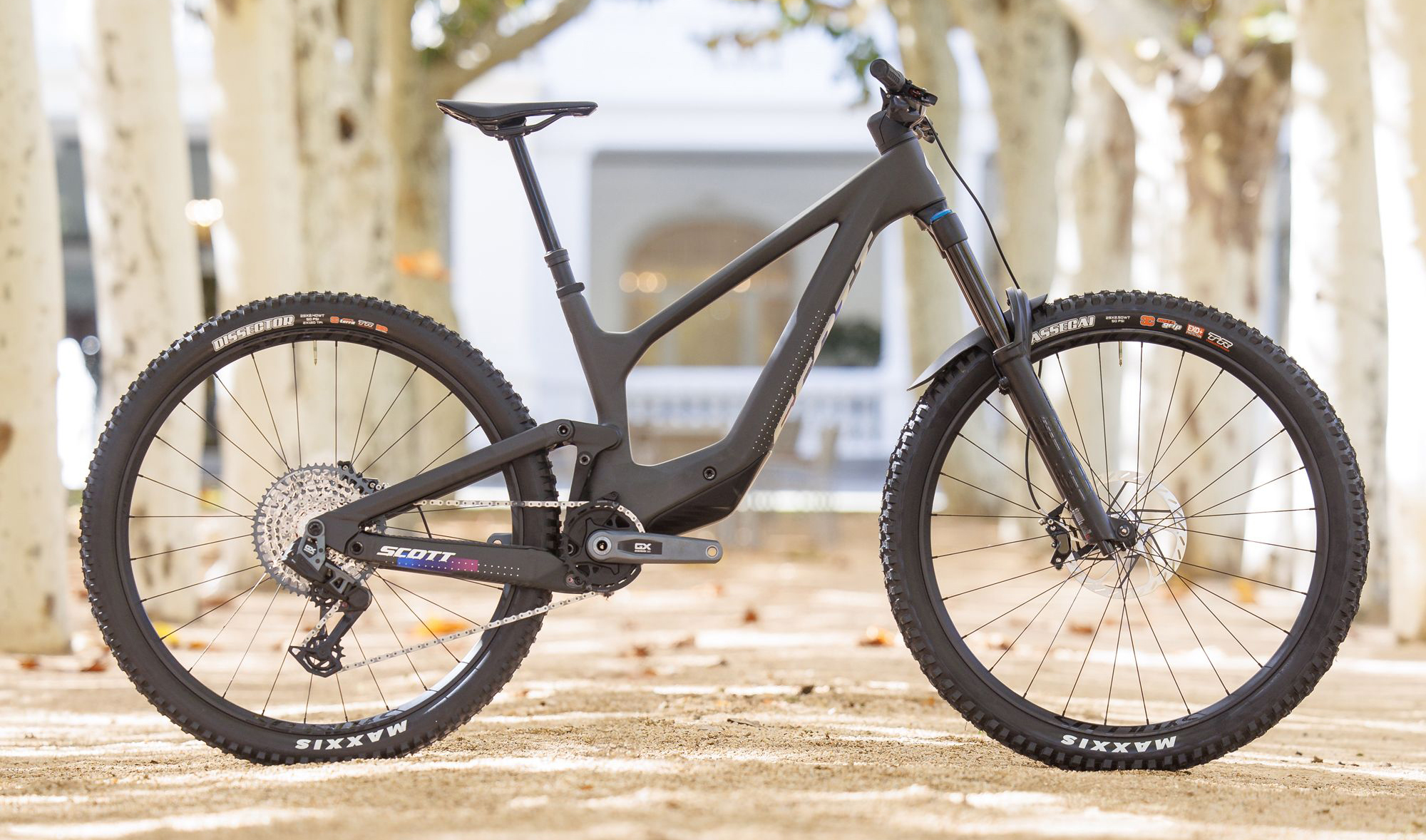
- Drivetrain: SRAM NX w/ SX shifter
- Brakes: SRAM DB8 w/ 200 mm rotors
- Fork: RockShox ZEB Select+
- Shock: Fox Float X Nude
- Wheels: Syncros Revelstoke 2.5
- Dropper Post: Syncros Duncan 1.5S (S: 140mm; M: 180 mm; L & XL: 210 mm)
- Drivetrain: SRAM GX Transmission
- Brakes: SRAM Code RSC w/ 200 mm HS2 rotors
- Fork: Fox 38 Performance Elite Grip 2
- Shock: Fox Float X Nude
- Wheels: Syncros Revelstoke 2.0
- Dropper Post: Syncros Duncan 1.5S (S: 140mm; M: 180 mm; L & XL: 210 mm)
- Drivetrain: SRAM X0 Transmission
- Brakes: SRAM Code Ultimate Stealth w/ 200 mm HS2 rotors
- Fork: Fox 38 Performance Elite Grip 2
- Shock: Fox Float X Nude
- Wheels: Race Face Turbine R
- Dropper Post: Syncros Duncan 1.5S (S: 140mm; M: 180 mm; L & XL: 210 mm)
Fit and Sizing
The Ransom doesn’t stray too far from the norm in its geometry, and for most people, that will be a good thing. I rode a size Large Ransom, which is slightly on the long side of modern Large bikes, but not so big that it’s an outlier.
At 5’9”-ish with long arms and legs, Scott’s fit finder puts me on a size Medium, although tweaking the somewhat ambiguous inputs can bump me up to a size Large. I’m generally comfortable on bigger bikes, and the geometry of my personal bikes more closely lines up with the Large Ransom, so that’s what I went with. No regrets there; as I noted, the Ransom’s geometry is pretty standard amongst bikes in this class, so going with sizing that I was already comfortable with didn’t yield any surprises on the Ransom.
As with many bikes, it took me a ride or two to find my balance point on the Ransom, but since that adjustment period, I’ve felt entirely comfortable on it. The Ransom’s geometry doesn’t yield any particularly unique traits — it feels pretty neutral, and I didn’t find that I needed to ride the bike a particular way to make it work.
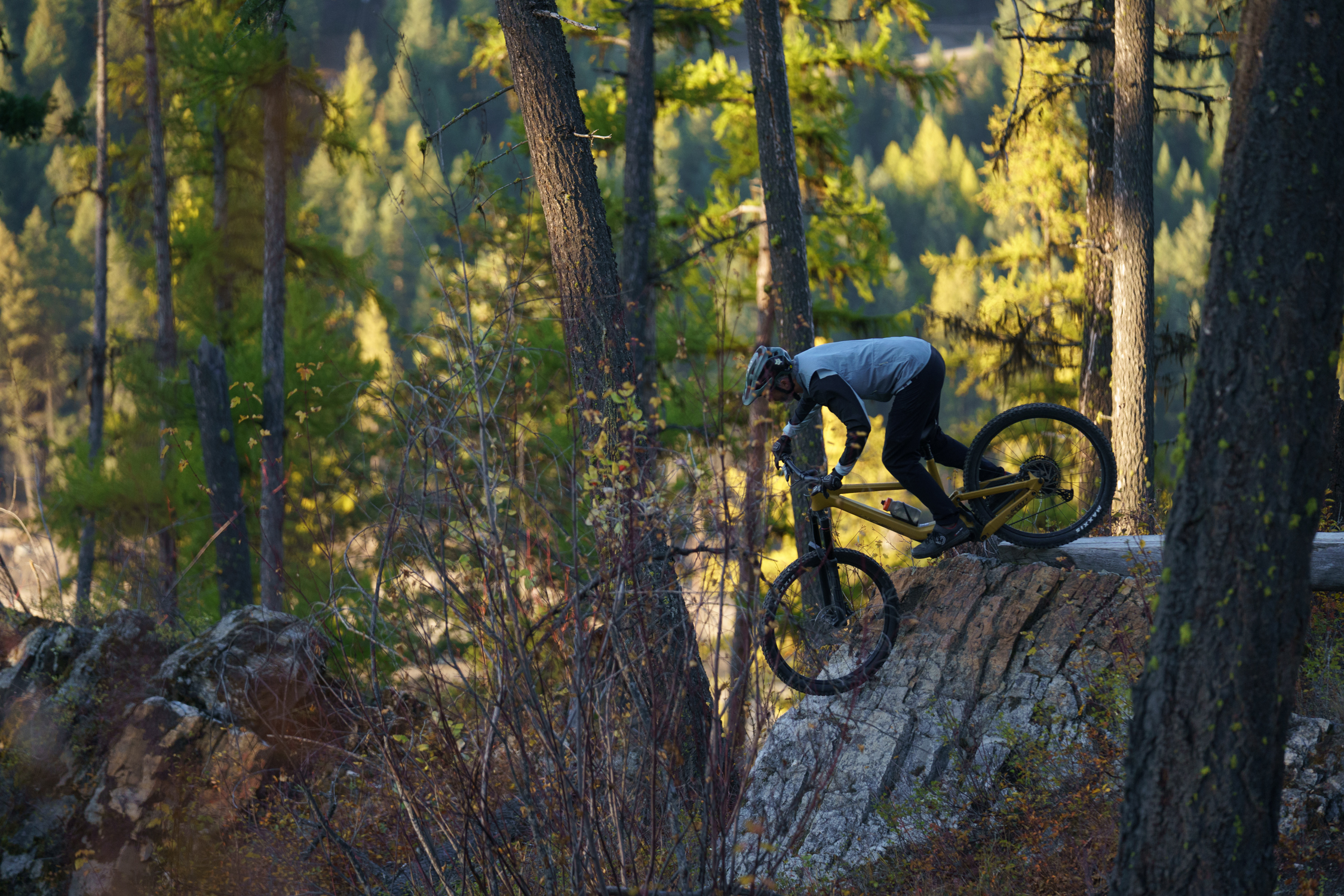
I did scoot the seat a bit forward on the rails to shorten up the top tube a little, but that’s unsurprising given that I’m at the short end for a size Large.
I spent all of my time on the Ransom with the stock 29 / 29 wheel setup, and I spent the vast majority of my time in the slackest 63.8ᣞ headset setting. I could see going steeper on slower speed, jankier trails, but for my home trails, slacker felt better.
Climbing
In its native state (i.e., unlocked), the Ransom doesn’t feel particularly efficient going uphill, but it’s not a total dog either. It prioritizes traction over firming up the suspension and clearly leans into the fact that the option to firm up the suspension is at your fingertips. Amongst other Enduro-ish bikes, I’d place it on the less efficient end of the spectrum, but it’s not wildly off the end of the chart.
What sets the Ransom apart is that you have this semi-complicated rear shock with controls mounted on the handlebar. You don’t even have to go through the trouble of reaching between your legs to fumble around for a lockout lever — it’s right there on the bar. I am on record with personal preferences towards simplicity, and the lockout contraption on the Ransom is decidedly not that. That said, it works great and it’s really nice. Given the not-particularly-efficient feel of the bike in open mode, having the ability to easily firm up the shock is especially useful.
I particularly liked the “ramp control” mode — it shortens the travel of the bike so the rear gets around 130mm travel (down from 170mm). Notably, that mode doesn’t mess with the shock’s damping much, if at all; it still works like a normal shock, just with less travel. This makes the bike feel noticeably more efficient on climbs while still having a functional shock that maintains good traction.
I used the lock mode as well, mostly in the normal situations for such a thing: longer fireroad climbs and the like. That mode is comparable to the lock mode I’ve used on plenty of other bikes.
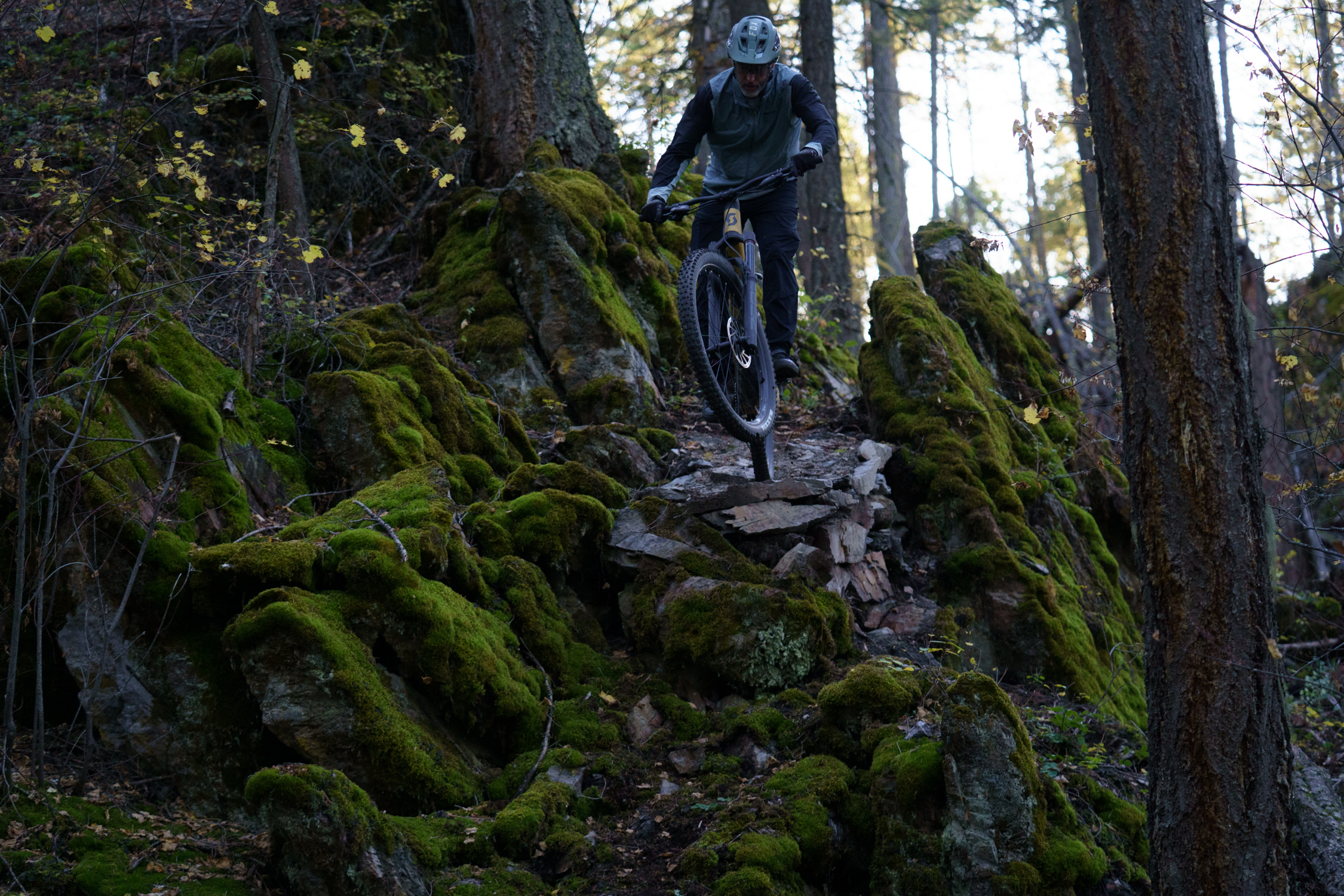
And, of course, having the controls on the handlebar means you have the not-insignificant benefit of being able to unlock the suspension while descending without taking your hand off the bar. Which is nice for when I spend my time at the top eating snacks and petting dogs instead of remembering to unlock my shock.
I will note, however, that the three levers (dropper / suspension lock / suspension unlock) take a little getting used to. On quite a few occasions, I went to lock my suspension and instead popped my seat up, or vice versa. Scott could do a better job of making the levers different shapes. That lever pod is also integrated into the SRAM Matchmaker brake lever, but it’s limited in how it can be positioned. People who are very picky about such things may find it frustrating, though you could mount the lever assembly on a standalone clamp to make it more adjustable.
The Ransom’s seated position is fine for climbing. On truly steep stuff, the front isn’t quite as planted as some bikes with a steeper seat tube and/or a longer rear end, but I didn’t find it to be problematic. The relatively high bottom bracket also means that the Ransom is a bit easier to pedal through chunky, techy climbs, especially if the suspension is in the short travel setting, where the bike sags in a little less.
Does all that technology mean that the Ransom can double as a Trail bike, or at least a more well-rounded All-Mountain bike? Ehhhh, that’d be a bit of a stretch. It’s still fairly portly, slack-ish, and no matter what you do with the rear shock, there’s still a 170mm fork on the front. As a bottom line of sorts, I didn’t mind going uphill on this bike, and I’d happily commit to bigger climbs on it. But those bigger climbs had better lead to an awesome descent where this bike is really in its element. If most of my riding was flatter and/or mellower, I’d still rather be on a shorter travel bike.

Descending
As I’ve already said, the Ransom doesn’t go too crazy with its geometry numbers or kinematics, and that shows on the trail when things point downhill. There’s a reason the industry has more or less landed on a set of numbers that make a bike descend well, and the Ransom’s rough adherence to those numbers means that it’s an entirely competent descender, and also one that’s easy to get along with without any dramatic adjustments to how one rides a bike.
It took me a ride or two to get the suspension dialed into where I liked it. My starting point was RockShox’s recommended air pressure in the ZEB fork, and Scott’s recommended sag at the rear shock. Conveniently, there’s a sag indicator built into the bottom bracket link, since messing with the rubber ring on the shock is tricky when it’s tucked inside the frame. I ultimately landed on higher pressures in both the fork and rear shock (63 psi in the fork, and 195 psi in the shock) for my 165 lb weight, which yielded about 27% sag in the rear (vs. Scott’s recommended 30%). I also took all the volume spacers out of the ZEB, and bumped up the compression damping front and rear; I’m running the ZEB’s LSC at 5 clicks from closed, and the HSC at 3 clicks from closed. In the rear, I had the Float X’s LSC at 4 clicks from closed. All of that made for a more supportive ride, and I felt like I could push the bike a little harder into bermed corners.
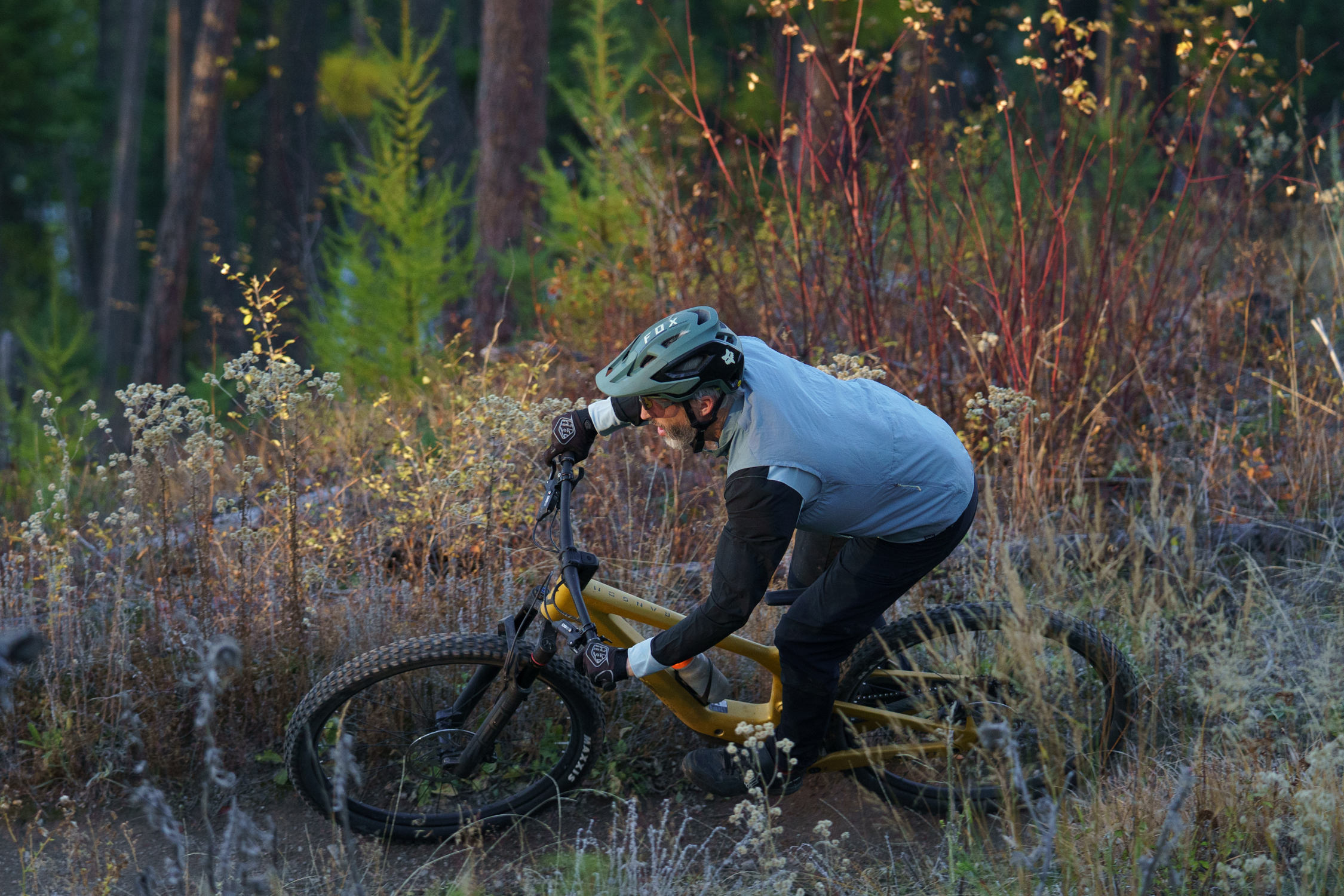
Even with some efforts to make for a more supportive ride, the Ransom still errs on the side of plushness and comfort; it doesn’t feel like a bike that rides especially high in its travel (at either end). That said, both the ZEB and the Float X did a decent job of ironing out smaller roots and rocks and maintaining traction on flatter corners. I wouldn’t say the Ransom is overwhelmingly compliant over small bumps — it feels like a relatively stiff frame that can chatter around a bit in choppy situations. But it’s not exceedingly harsh, and that bit of extra stiffness makes it feel less noodly when loading it up sideways.
I was also really impressed at how well the bike handled bigger impacts. The Ransom has an addictively smooth bottom out that makes hard landings something akin to pleasant. I think this can likely be chalked up mostly to the shock tune, but whatever Scott and Fox did in there, they nailed it.
Another interesting note on the rear shock is that, on occasion, I’d use the “Ramp Control” setting while descending. Particularly on smoother, flowier jump trails where having a bit of extra pop was beneficial, the shorter-travel mode does exactly that — it gives the bike more pop. In the past, I’ve generally been disinclined to use anything but the open mode on multi-position rear shocks, because using modes with a bunch of extra damping was a good way to substantially shorten the lifespan of the shock. But with the Ransom’s shock, the Ramp Control mode effectively shortens the stroke; it doesn’t add an excessive amount of damping. So I *think* that means that descending in the Ramp Control mode isn’t going to hasten the demise of the unit (although my five weeks with the bike weren’t enough to properly test this theory).

The Hidden Shock: It looks unique, and it makes the Ransom look like an ebike. Whether you like the aesthetics is fairly subjective. Personally, I’m a bit indifferent to the looks; it’s pleasingly clean, but lacking in the fundamentally utilitarian vibe that I appreciate about bikes. Functionally, I have some notes.
The shock stays cleaner from mud, but some dust still gets in there. Theoretically, the shock might run a bit warmer with less airflow around it. In practice, I didn’t notice this to be an issue at all. I think people perhaps overstate the cooling effects you get from airflow at mountain bike speeds. Access to the shock is easy; the hatch pops off with zero fuss. I have not had the hatch pop off while riding, even though it’s caught plenty of rocks. It seems to hold up to rock strikes just fine, although it’s quite loud when it gets hit. There isn’t any sort of rubber guard on the hatch cover to dampen the sound.
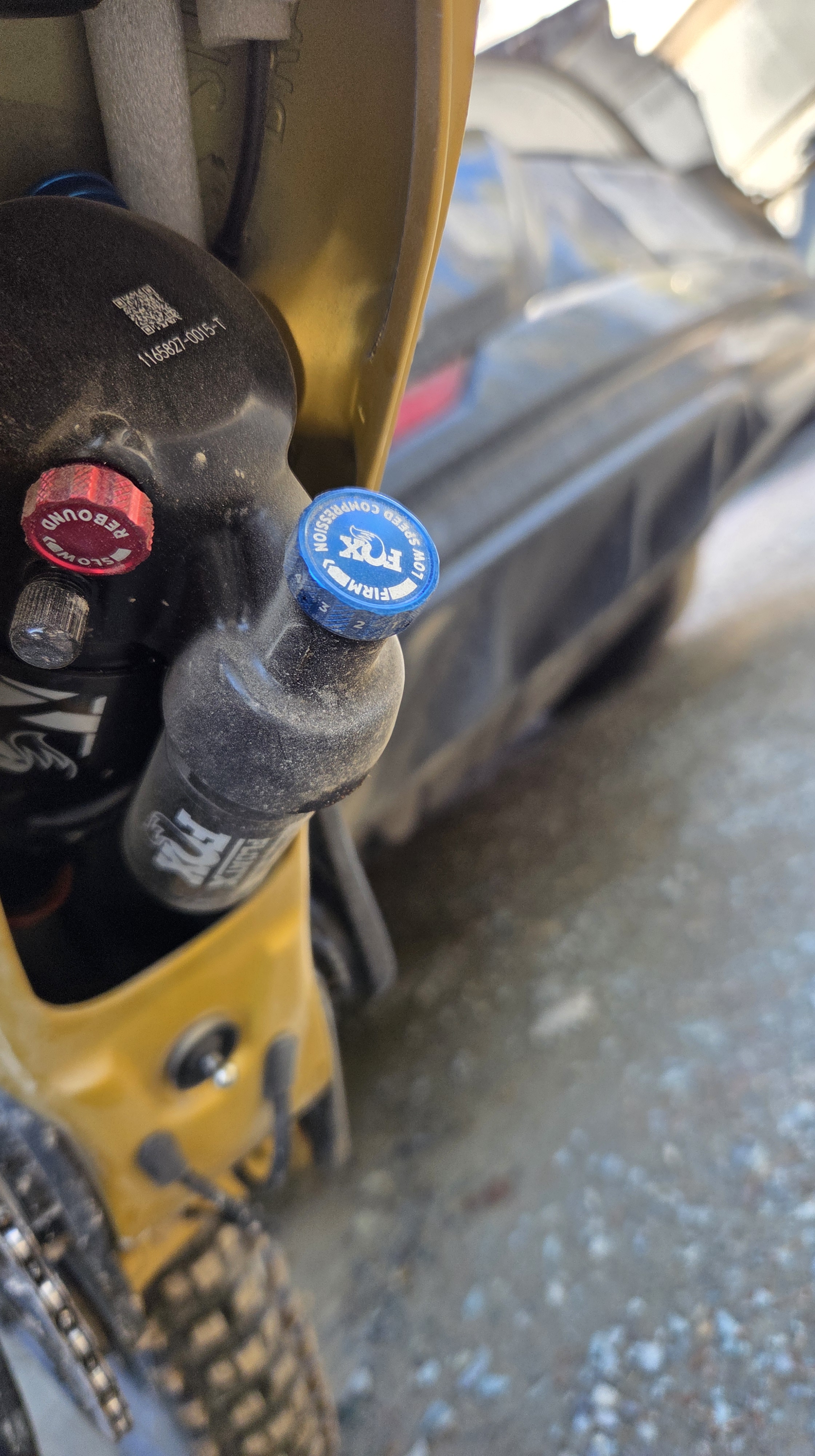
The internal shock placement seems to be the primary driver behind the 6-bar linkage; my impression is that the suspension design is more about fitting a shock in the downtube than achieving a particular set of kinematics. The design is more complicated, heavier, and has more bearings to replace than a 4-bar design. The bottom bracket link in particular is a cause for concern; my experience is that pivots concentric to the bottom bracket require some extra maintenance. It’s a big bearing in a high-stress area that’s very exposed to the elements. All that said, the Ransom’s suspension works really well.
There are other ancillary downsides to the shock placement / suspension design. Namely, there are no ISCG tabs, and therefore, there’s no easy way to run a bash guard. The bike does have a built-in chainguide, but you’re at the mercy of Scott if it needs replacement.
The Fox Float X Nude: Having a proprietary multi-mode shock with handlebar-mounted controls is not everyone’s cup of tea. Prior to riding this bike, I would have said I was squarely in the “I don’t want that tea” camp. After riding it, I kind of like it. It works exactly as it should, and it works well. I used it all the time. Am I going to try to source that setup to put on my other bikes? No. But I definitely see the value in it. Yes, there’s room for improvement in the lever unit on the handlebar, but I got used to it. It’s also noteworthy that the shock is a standard size, so if you hate the system or it fails at some point in the future and Fox isn’t making parts for it anymore, you can replace it with any number of other shocks (although a few might have clearance issues with the hatch cover). Ultimately, I think I’d rather have this system than electronically controlled suspension.
Cable Routing Through the Headset: I hate it. Looks are subjective, but I think the whole stem area looks like a Lizard Skins Ballfrog and a synthol-injected emu conceived a love child plagued by glandular tumors. It is both aesthetically and functionally deficient.
The case for running cables through the headset is that it makes a cleaner look and a stronger headtube junction, because the frame doesn’t need additional holes poked in it. But the cost is that working on the bike becomes a significant pain in the ass.
In the case of this specific Syncros stem / headset combo, the unit is poorly sealed; water can enter around the cables and sit inside the headtube on top of the lower headset bearing. Syncros addressed this by putting a meatier seal on top of that bearing, which is an attempt at solving a problem that shouldn’t exist in the first place. The system also requires specialized headset spacers with room for the cables. The problem with those spacers is that they can only mount below the stem. On a normal bike, if you want to try lowering your stem, you can just swap a spacer to the top of the stem. That doesn’t work with this system — if you want to lower the stem, you have to cut the steerer tube. There’s no flat surface on top of the stem to add normal headset spacers, and the funky-shaped Syncros top cap is designed to sit flush on the stem.
The higher-end versions of the Ransom come with a one-piece stem and handlebar, which has all the same downsides along with the additional downside of not being able to change the handlebar roll. Headset cable routing is a pain to work on regardless, but the Syncros system’s reliance on their proprietary stem and top cap adds an extra headache.
Internal Storage: Personally, I like internal storage when I have it, but I don’t consider it a necessary feature of a bike. The Ransom’s internal storage is close to being great, but just misses the mark. On one hand, it’s really nice having tools and a tube that are cleanly integrated into the frame. On the other hand, the tools are incomplete (there’s no 6mm hex wrench, and the 8mm wrench is weird), and there’s not really any room in the internal storage for anything other than the included kit (mostly because a lot of space in the downtube is occupied by the rear shock). This is mostly a problem because there’s no room for a pump (much less snacks or a jacket). Even cramming in a couple of CO2s and a plug kit was tight. Having a spare tube integrated into the frame is only great if I have a way to inflate it.
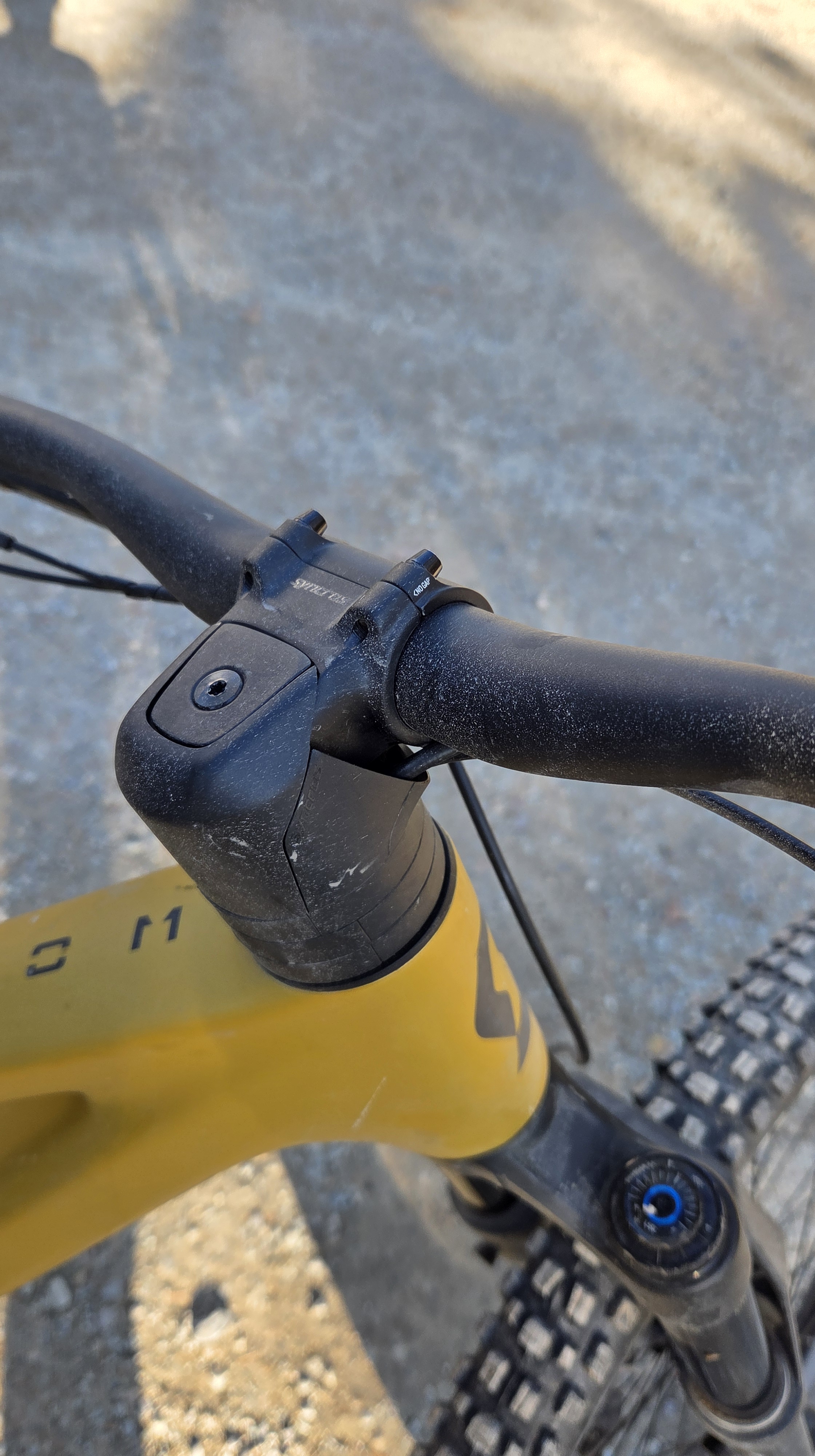
Ransom 920 Parts Spec: It comes with good tires: a Maxxis DoubleDown MaxxtTerra Dissector in the rear and a Maxxis Exo+ MaxxGrip Assegai in the front. I’m good with that choice, and I’m especially good with them being appropriate casings and compounds for this bike. The RockShox ZEB Select+ was solid for me once I got it dialed — I thought it rode great, and paired nicely with the rear shock. The Syncros Duncan dropper post does the basics (goes up and down) just fine, and the travel is easily adjustable without tools. I was entirely pleased to be able to set the drop as long as possible (up to 210mm) for my leg length without having to swap to a different post. I also found the Syncros Tofino saddle to be pretty comfy. The stem/headset, which is generally horrible as discussed above, does have the silver lining of coming with an optional K-Edge mount if you’re into putting electronic gadgets in your cockpit.
SRAM NX shifting is functional, but not great, and I’d hope for more on a $6,000 bike. The wheelset is from Syncros, and I don’t really have any problems with it aside from the rear hub, which only has 20 points of engagement. I’m not an “ultra high engagement is necessary” kind of guy, but 20 points is noticeably bad while riding. Because of the NX groupset, the rear hub also has an HG freehub body, which means if you ever want to upgrade the cassette, you’ll need to replace that freehub body (which, in practical terms, might mean buying a whole new rear wheel).

Bottom Line
I’ve come to appreciate the Ransom for what it is — in the current state of the industry, it’s relatively rare for a major manufacturer to produce a bike that’s notably different from some other options out there. The modern mountain bike world is one where much of the industry is moving in the same direction. Most of the major players are running one of a small handful of suspension designs producing kinematics that are fairly similar, with generally similar geometry in a lot of cases.
While the kinematics and geometry are normal, the differences between the Ransom and any number of its competitors are not minor details. The Ransom has features that very few, if any, competitors have. If you want those features, then this is the bike for you. If you don’t want those features, then there are plenty of other fish in the sea. So I think the bottom line here is that, if you’re into the features the Ransom has, you can move forward knowing that it’s a good bike that rides well. Just make sure you get your story straight when people ask whether it’s an ebike.


This summer I bought a Scott Genius which shares a lot with the Ransom. I too get asked how I like my eMTB and have to explain that it’s not. On the Genius the partial lockout and the full lock-out include the front suspension. I came from an old 2003 Kona full suspension and everything is new and different (I feel like I’m learning to ride all over again but it’s so much easier – bigger wheels and the geometry). I haven’t ridden another new MTBs to compare but I love my Scott and I picked it up for 1/2 price on their clearance sale this summer so I can’t complain. I’m an intermediate MTBer at best so the bike is above my talent grade. I like the handlbar lock-outs they make the transition easy probably switch modes more often then I would otherwise (maybe not always needed) also as said it gets some getting use to and not hit the drop-seat lever when you mean lock-out but after a few rides it becomes muscle memory.
The engineer in me has always been Scott-curious, what with the trac-loc stuff and all, but the cables and the headset routing especially are non-starters.
I’m not so sure about more batteries and computers being the solution to anything, but this might be a great application for a Fox Neo Live Valve rear shock.
I better not see you out on the restricted trails on this e-bike!